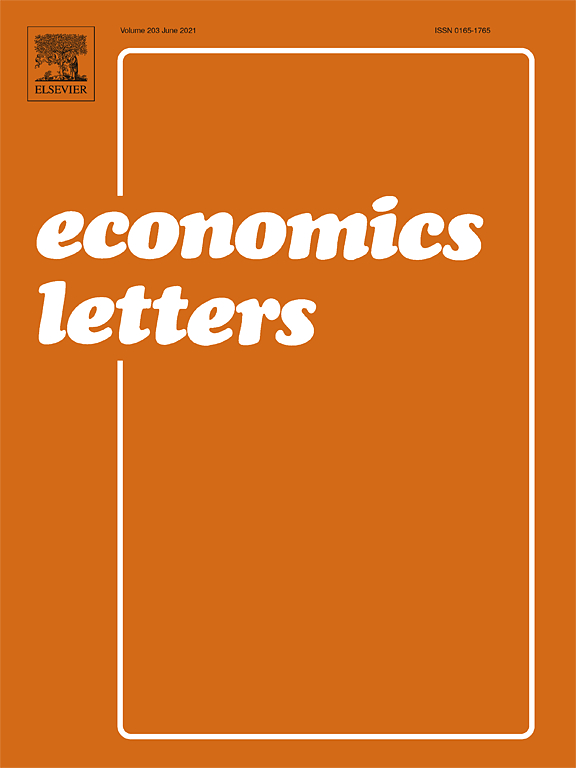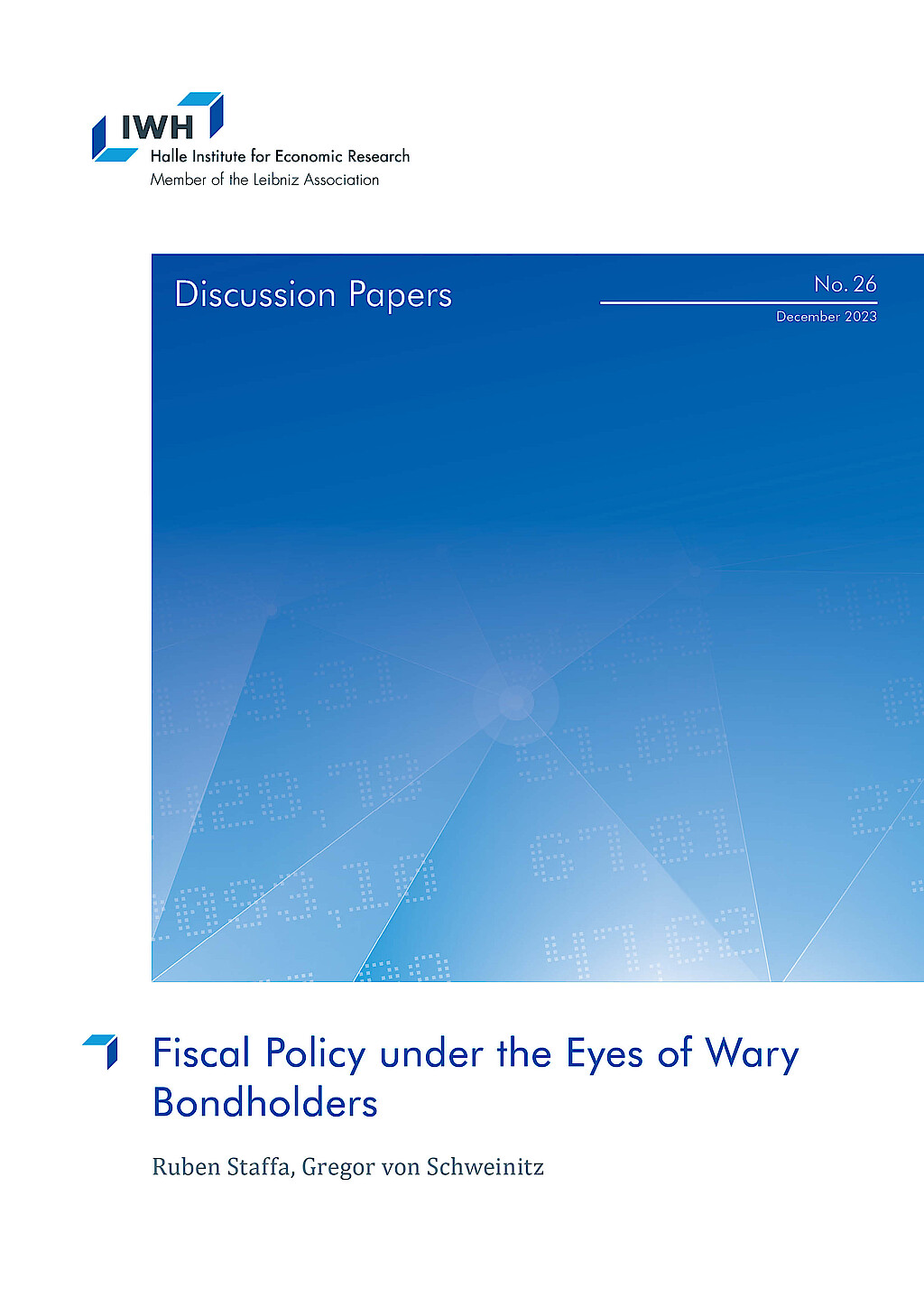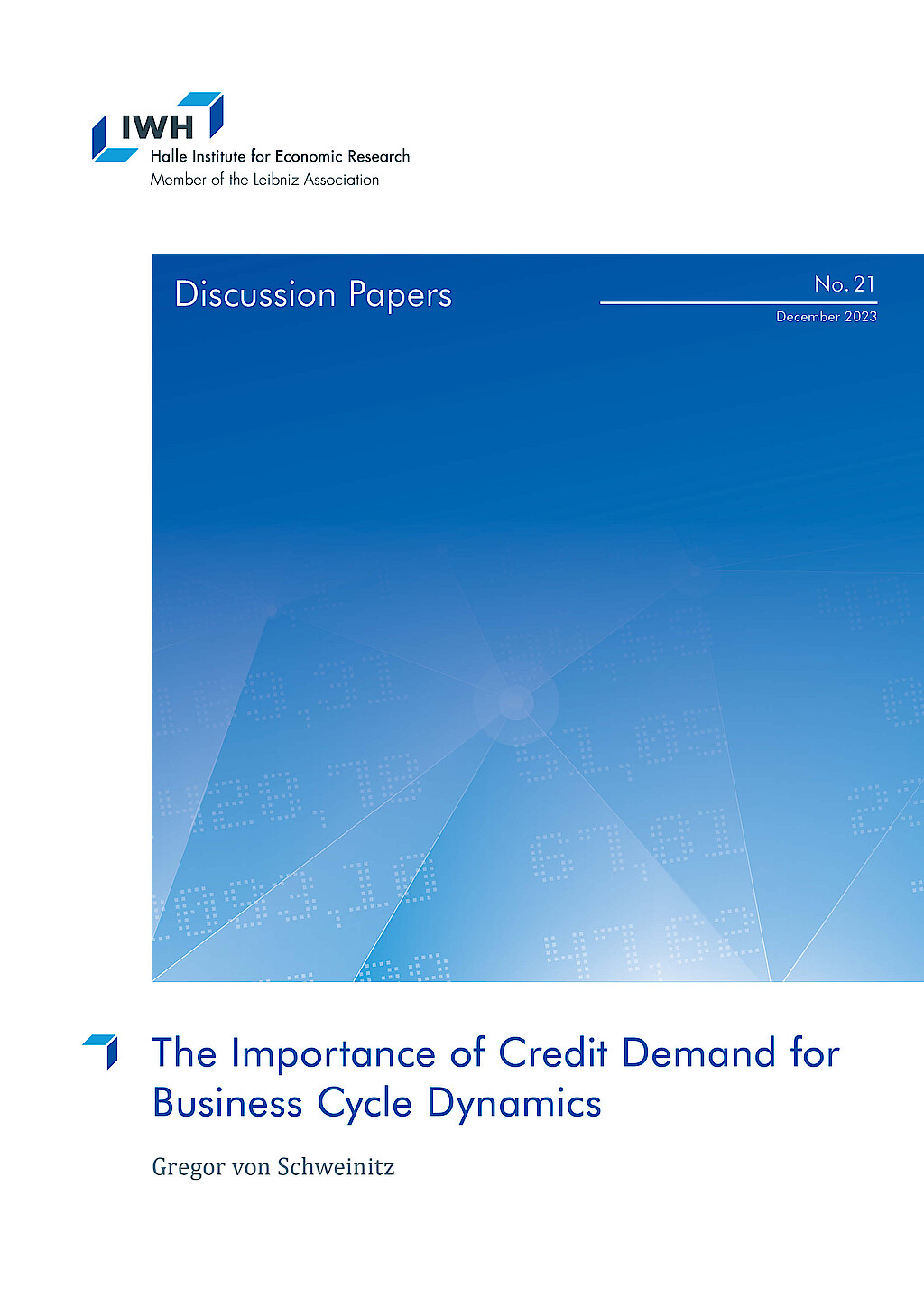Volatility, Growth and Financial Crises
This research group analyses the build-up of financial vulnerabilities and real consequences of financial crises. Different policy shocks and the causal reaction of macroeconomic aggregates are identified. Early-warning models describe the cyclical nature of financial vulnerabilities.
IWH Data Project: Financial Stability Indicators in Europe
Research Cluster
Financial Resilience and RegulationYour contact

- Department Macroeconomics
EXTERNAL FUNDING
01.2022 ‐ 12.2023
Sovereign Risk Shocks
05.2017 ‐ 09.2019
Early Warning Models for Systemic Banking Crises: The Effect of Model and Estimation Uncertainty
01.2018 ‐ 12.2018
International Monetary Policy Transmission
Refereed Publications

Global Food Prices and Monetary Policy in an Emerging Market Economy: The Case of India
in: Journal of Asian Economics, 2016
Abstract
This paper investigates a perception in the political debates as to what extent poor countries are affected by price movements in the global commodity markets. To test this perception, we use the case of India to establish in a standard SVAR model that global food prices influence aggregate prices and food prices in India. To further analyze these empirical results, we specify a small open economy New-Keynesian model including oil and food prices and estimate it using observed data over the period 1996Q2 to 2013Q2 by applying Bayesian estimation techniques. The results suggest that a big part of the variation in inflation in India is due to cost-push shocks and, mainly during the years 2008 and 2010, also to global food price shocks, after having controlled for exogenous rainfall shocks. We conclude that the inflationary supply shocks (cost-push, oil price, domestic food price and global food price shocks) are important contributors to inflation in India. Since the monetary authority responds to these supply shocks with a higher interest rate which tends to slow growth, this raises concerns about how such output losses can be prevented by reducing exposure to commodity price shocks.

The Diablo 3 Economy: An Agent Based Approach
in: Computational Economics, No. 2, 2016
Abstract
Designers of MMOs such as Diablo 3 face economic problems much like policy makers in the real world, e.g. inflation and distributional issues. Solving economic problems through regular updates (patches) became as important to those games as traditional gameplay issues. In this paper we provide an agent framework inspired by the economic features of Diablo 3 and analyze the effect of monetary policy in the game. Our model reproduces a number of features known from the Diablo 3 economy such as a heterogeneous price development, driven almost exclusively by goods of high quality, a highly unequal wealth distribution and strongly decreasing economic mobility. The basic framework presented in this paper is meant as a stepping stone to further research, where our evidence is used to deepen our understanding of the real-world counterparts of such problems. The advantage of our model is that it combines simplicity that is inherent to model economies with a similarly simple observable counterpart (namely the game environment where real agents interact). By matching the dynamics of the game economy we can thus easily verify that our behavioral assumptions are good approximations to reality.

Real Effective Exchange Rate Misalignment in the Euro Area: A Counterfactual Analysis
in: Review of International Economics, No. 1, 2016
Abstract
The European debt crisis has revealed severe imbalances within the Euro area, sparking a debate about the magnitude of those imbalances, in particular concerning real effective exchange rate misalignments. We use synthetic matching to construct a counterfactual economy for each member state in order to identify the degree of these misalignments. We find that crisis countries are best described as a combination of advanced and emerging economies. Comparing the actual real effective exchange rate with those of the counterfactuals gives evidence of misalignments before the outbreak of the crisis: all peripheral countries appear strongly and significantly overvalued.

Financial Constraints on Growth: Comparing the Balkans to Other Transition Economies
in: Eastern European Economics, No. 4, 2015
Abstract
This article applies an adjusted growth diagnostic approach to identify the currently most binding constraint on financing growth in the West Balkan countries. Since this group of economies faces both structural and systemic transformation problems, the original supply-side approach might not be sufficient to detect the most binding constraint. The results of the analysis indicate that the binding constraint on credit and investment growth in the region is the high and increasing share of nonperforming loans, primarily in the household sector, due to policy failures. This article compares the Balkan countries to a group of advanced transition economies. Single-country and panel regressions indicate that demand-side factors do not play a constraining role on growth in the West Balkan countries, but they do in the advanced transition economies.

Risk and Return - Is there an Unholy Cycle of Ratings and Yields?
in: Economics Letters, 2015
Abstract
After every major financial crisis, the question about the responsibility of the rating agencies resurfaces. Regarding government bonds, the most frequently voiced concern targeted “unreasonably” bad ratings that might trigger capital flights and increasing risk premia which sanction further rating downgrades. In this paper we develop a multivariate, nonparametric version of the Pesaran type cointegration model that allows for nonlinearities, to show that a unique equilibrium between ratings and sovereign yields exists. Therefore, we have to reject the concern that there is an unholy cycle leading to certain default in the long run.
Working Papers

Risky Oil: It's All in the Tails
in: NBER Working Paper, No. 32524, 2024
Abstract
<p>The substantial fluctuations in oil prices in the wake of the COVID-19 pandemic and the Russian invasion of Ukraine have highlighted the importance of tail events in the global market for crude oil which call for careful risk assessment. In this paper we focus on forecasting tail risks in the oil market by setting up a general empirical framework that allows for flexible predictive distributions of oil prices that can depart from normality. This model, based on Bayesian additive regression trees, remains agnostic on the functional form of the conditional mean relations and assumes that the shocks are driven by a stochastic volatility model. We show that our nonparametric approach improves in terms of tail forecasts upon three competing models: quantile regressions commonly used for studying tail events, the Bayesian VAR with stochastic volatility, and the simple random walk. We illustrate the practical relevance of our new approach by tracking the evolution of predictive densities during three recent economic and geopolitical crisis episodes, by developing consumer and producer distress indices that signal the build-up of upside and downside price risk, and by conducting a risk scenario analysis for 2024.</p>

Fiscal Policy under the Eyes of Wary Bondholders
in: IWH Discussion Papers, No. 26, 2023
Abstract
This paper studies the interaction between fiscal policy and bondholders against the backdrop of high sovereign debt levels. For our analysis, we investigate the case of Italy, a country that has dealt with high public debt levels for a long time, using a Bayesian structural VAR model. We extend a canonical three variable macro mode to include a bond market, consisting of a fiscal rule and a bond demand schedule for long-term government bonds. To identify the model in the presence of political uncertainty and forward-looking investors, we derive an external instrument for bond demand shocks from a novel news ticker data set. Our main results are threefold. First, the interaction between fiscal policy and bondholders’ expectations is critical for the evolution of prices. Fiscal policy reinforces contractionary monetary policy through sustained increases in primary surpluses and investors provide incentives for “passive” fiscal policy. Second, investors’ expectations matter for inflation, and we document a Fisherian response of inflation across all maturities in response to a bond demand shock. Third, domestic politics is critical in the determination of bondholders’ expectations and an increase in the perceived riskiness of sovereign debt increases inflation and thus complicates the task of controlling price growth.

Macroeconomic Effects from Sovereign Risk vs. Knightian Uncertainty
in: IWH Discussion Papers, No. 27, 2023
Abstract
This paper compares macroeconomic effects of Knightian uncertainty and risk using policy shocks for the case of Italy. Drawing on the ambiguity literature, I use changes in the bid-ask spread and mid-price of government bonds as distinct measures for uncertainty and risk. The identification exploits the quasi-pessimistic behavior under ambiguity-aversion and the dealer market structure of government bond markets, where dealers must quote both sides of the market. If uncertainty increases, ambiguity-averse dealers will quasi-pessimistically quote higher ask and lower bid prices – increasing the bid-ask spread. In contrast, a pure change in risk shifts the risk-compensating discount factor which is well approximated by the change in bond mid-prices. I evaluate economic effects of the two measures within an instrumental variable local projection framework. The main findings are threefold. First, the resulting shock time series for uncertainty and risk are uncorrelated with each other at the intraday level, however, upon aggregation to monthly level the measures become correlated. Second, uncertainty is an important driver of economic aggregates. Third, macroeconomic effects of risk and uncertainty are similar, except for the response of prices. While sovereign risk raises inflation, uncertainty suppresses price growth – a result which is in line with increased price rigidity under ambiguity.

The Importance of Credit Demand for Business Cycle Dynamics
in: IWH Discussion Papers, No. 21, 2023
Abstract
This paper contributes to a better understanding of the important role that credit demand plays for credit markets and aggregate macroeconomic developments as both a source and transmitter of economic shocks. I am the first to identify a structural credit demand equation together with credit supply, aggregate supply, demand and monetary policy in a Bayesian structural VAR. The model combines informative priors on structural coefficients and multiple external instruments to achieve identification. In order to improve identification of the credit demand shocks, I construct a new granular instrument from regional mortgage origination. <br />I find that credit demand is quite elastic with respect to contemporaneous macroeconomic conditions, while credit supply is relatively inelastic. I show that credit supply and demand shocks matter for aggregate fluctuations, albeit at different times: credit demand shocks mostly drove the boom prior to the financial crisis, while credit supply shocks were responsible during and after the crisis itself. In an out-of-sample exercise, I find that the Covid pandemic induced a large expansion of credit demand in 2020Q2, which pushed the US economy towards a sustained recovery and helped to avoid a stagflationary scenario in 2022.

Uncovering Disaggregated Oil Market Dynamics: A Full-Information Approach to Granular Instrumental Variables
in: Working Paper, 2023
Abstract
<p>The world price of oil is determined by the interactions of multiple producers and consumers who face different constraints and shocks. We show how this feature of the oil market can be used to estimate local and global elasticities of supply and demand and provide a rich set of testable restrictions. We develop a novel approach to estimation based on full-information maximum likelihood that generalizes the insights from granular instrumental variables. We conclude that the supply responses of Saudi Arabia and adjustments of inventories have historically played a key role in stabilizing the price of oil. We illustrate how our structural model can be used to analyze how individual producers and consumers would dynamically adapt to a geopolitical event such as a major disruption in the supply of oil from Russia.</p>














